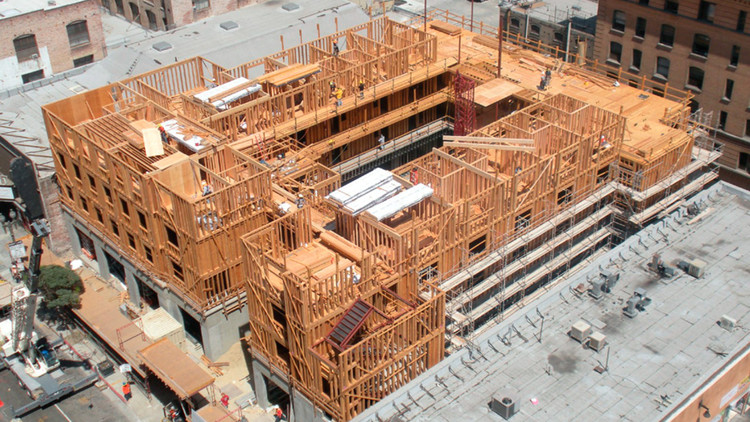
Podium construction – alternately known as platform or pedestal construction – is a building typology characterized by a horizontal division between a lower ‘podium’ and an upper tower. The podium, which is typically made of concrete or steel, is crowned by multiple light wood-frame stories. Often, the lighter upper structure contains four to five stories of residential units, while the podium houses retail, commercial, or office spaces and above- or below-grade parking. An alternative configuration sports six to seven residential stories (including the podium) and subterranean parking. Some visible examples of this podium construction style include the amenity-rich Stella residences designed by DesignArc; an attractive yet cost-effective student housing project for the University of Washington by Mahlum Architects; and the warm, modern University House Arena District also designed by Mahlum Architects in Eugene, Oregon.




